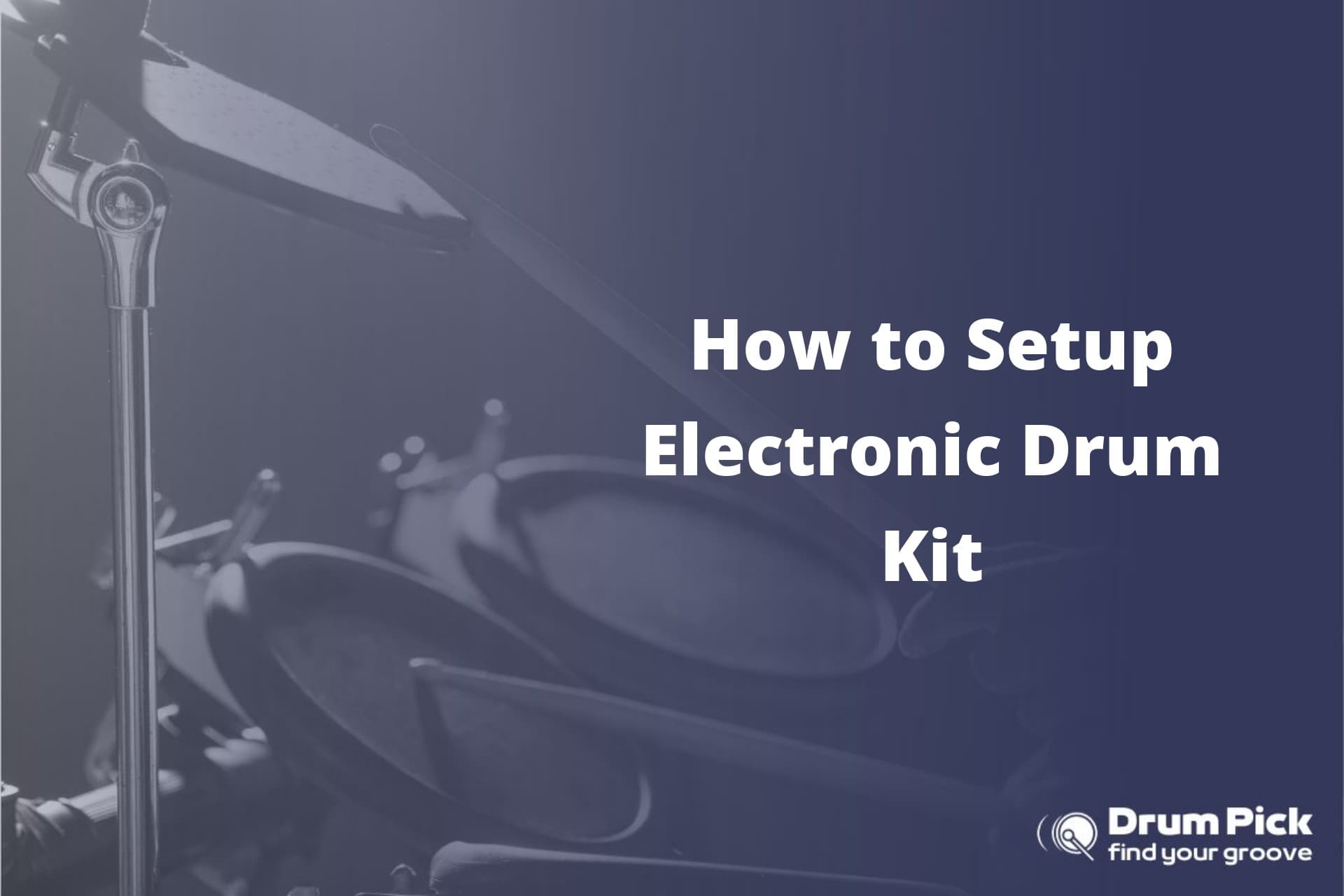Are you ready to unleash your inner rockstar?
Setting up your electronic drum kit is easier than you think. Imagine plugging in, feeling the beat, and creating music that moves you.
In this article, we will guide you through the process of assembling the hardware, connecting the cables, and adjusting the settings on your electronic drum module.
Get ready to rock and roll with your new kit in no time. Let’s dive in!
Choosing the Right Location for Your Electronic Drum Kit
You’ll want to consider the available space and noise level when choosing the right location for your electronic drum kit.
The first thing to consider is soundproofing options for your electronic drum kit setup. Since drumming can generate a lot of noise, it’s important to minimize the impact on others. One option is to set up your kit in a separate room or a dedicated drumming space. This will help contain the sound and prevent it from disturbing others in the house or neighboring apartments. To further reduce noise, you can invest in drum pads or mesh heads that dampen the sound of the drumsticks hitting the surface.
Another aspect to consider is the importance of proper lighting in your electronic drum kit setup. Good lighting is crucial for visibility and preventing eye strain during long practice sessions. You’ll want to ensure that you’ve adequate lighting in the room where you set up your kit. This can be achieved by using overhead lighting, task lighting, or even natural light from windows. Additionally, you can consider using adjustable lights that allow you to direct the light exactly where you need it.
Assembling the Hardware of Your Electronic Drum Kit
To start putting together your hardware, first connect the drum pads to the rack using the provided clamps. This will ensure that your pads are securely attached and won’t move around while you’re playing. Once the pads are attached, you can position them in a way that feels comfortable for you.
Here are some tips to help you assemble your electronic drum kit:
- **Use proper drumstick grip techniques:** Whether you prefer the traditional grip or the matched grip, make sure to hold the drumsticks correctly to optimize your playing technique and prevent injuries.
- **Invest in electronic drum kit accessories:** Enhance your drumming experience by adding accessories like a drum throne, kick pedal, and hi-hat stand. These accessories will provide stability and improve your overall playing comfort.
- **Organize your cables:** Keep your cables tidy and prevent them from tangling by using cable ties or clips. This won’t only make your setup look neater but also make it easier to troubleshoot any connection issues.
Connecting the Cables of Your Electronic Drum Kit
To ensure proper functionality, it’s important to connect the cables of your electronic drum components securely. When setting up your electronic drum kit, proper cable management is crucial for optimal performance. Start by identifying the cables and their corresponding ports on each component. Ensure that each cable is firmly inserted into its respective port, using gentle pressure to avoid any damage. Take care to organize the cables neatly, using cable ties or clips to avoid tangling and tripping hazards.
Troubleshooting techniques can help you identify and resolve any connectivity issues. If you encounter a problem with a specific component, start by checking the cable connections. Ensure that all cables are securely plugged in and that no loose connections are present. If the issue persists, try swapping the cables between components to determine if the problem lies with the cable or the component itself.
Additionally, periodically inspect and clean the cables to prevent any dust or debris buildup that may affect the signal transmission. A simple wipe with a soft cloth can help maintain the integrity of the cables.
Adjusting the Settings on Your Electronic Drum Module
Adjust the sensitivity and volume levels on your module to customize your drumming experience. The settings on your electronic drum module allow you to fine-tune the response of your drum pads and cymbals, as well as adjust the overall volume of your drum kit. By making these adjustments, you can ensure that your drum kit sounds exactly the way you want it to.
Here are some steps to help you adjust the sensitivity and volume levels on your electronic drum module:
- Start by selecting the pad or cymbal you want to adjust. Most modules have individual settings for each pad or cymbal, so you can customize the response of each one to your liking.
- Use the sensitivity control to adjust the responsiveness of the pad or cymbal. Turning it up will make the drum sound louder and more responsive, while turning it down will make it softer and less responsive.
- Next, use the volume control to adjust the overall volume of your drum kit. You can increase or decrease the volume to suit your preference or to match the other instruments in your band.
Testing and Troubleshooting Your Electronic Drum Kit
If you’re experiencing any issues with your electronic drum module, try testing the connections and troubleshooting the problem. Troubleshooting techniques can help identify and resolve common issues that may arise with your electronic drum kit.
First, ensure that all cables are securely connected. Check the power cable, audio cables, and MIDI connections. Loose or faulty connections can cause problems with sound output or responsiveness.
Next, verify that your drum pads and cymbals are properly connected to the module. Make sure they’re securely attached and positioned correctly. Loose or misaligned pads can result in inaccurate triggering or no response at all.
If you’re still experiencing issues, it’s important to check the settings on your drum module. Make sure the sensitivity and threshold levels are properly adjusted for each pad. Incorrect settings can lead to unwanted triggering or missed hits.
Lastly, if none of the above troubleshooting techniques resolve the problem, consult the user manual for further guidance. It may provide specific troubleshooting steps based on the make and model of your electronic drum kit.
Tips for Maintaining and Upgrading Your Electronic Drum Kit
When maintaining your electronic drum set, regularly clean the drum pads and cymbals with a soft cloth to remove any dirt or residue. This will help ensure that your drum set continues to function properly and produce high-quality sounds.
In addition to regular cleaning, there are several other tips for maintaining and upgrading your electronic drum kit.
- **Stick to a maintenance schedule**: Create a regular maintenance schedule to keep track of when you should clean your drum set, replace drumheads, or upgrade any components. This will help you stay organized and ensure that your drum set remains in optimal condition.
- **Explore upgrading options**: Electronic drum kits offer various upgrading options to enhance your drumming experience. Consider upgrading the sound module to access new drum sounds and features. You could also explore adding additional drum pads or cymbals to expand your kit’s capabilities.
- **Inspect and tighten hardware**: Regularly inspect and tighten the hardware on your drum set to prevent any loose parts or potential damage. Check the screws, bolts, and cables to ensure everything is secure and functioning properly.
Conclusion
In conclusion, setting up your electronic drum kit is like assembling the pieces of a musical puzzle. By carefully selecting the location, assembling the hardware, connecting the cables, adjusting the settings, and testing for any issues, you can create a harmonious drumming experience.
Remember to regularly maintain and upgrade your kit to keep the rhythm flowing smoothly. So, get ready to unleash your inner drummer and let the beats ignite like fireworks in the night sky.





